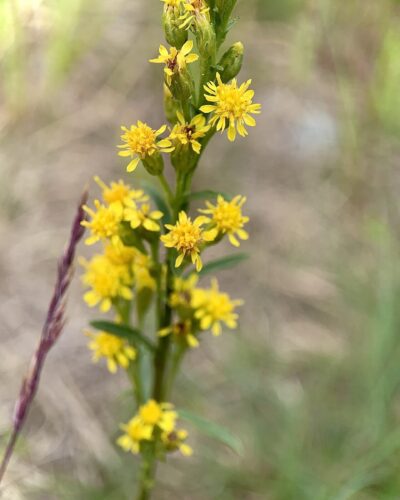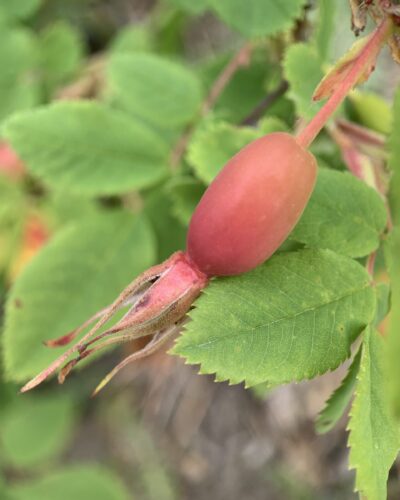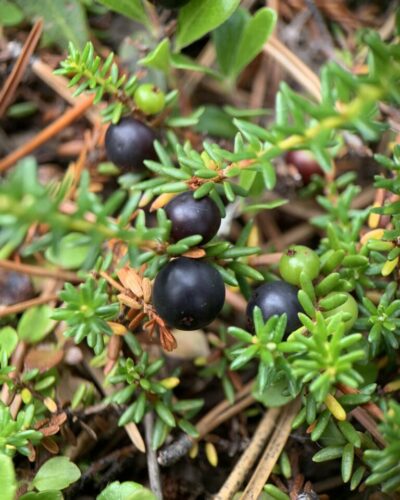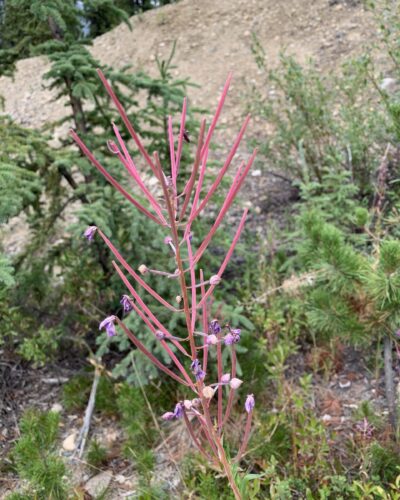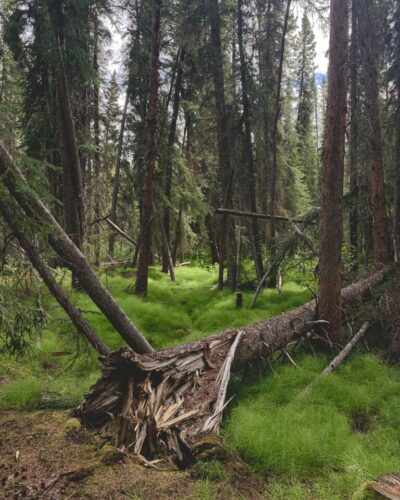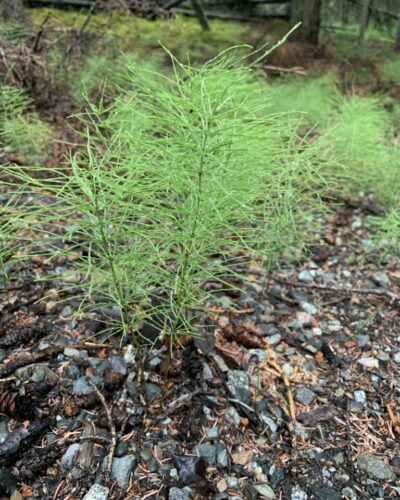Roots at Risk: A walk through Chasàn Chùa
Written by Paula Gomez Villalba, Communications Coordinator | February 21, 2024
On a sunny day nestled in a week of July rain, we came together in Chasàn Chùa/McIntyre Creek to join Plants of the Boreal, a walk and talk series that connects people, place, and plants. CPAWS Yukon has been partnering with like-minded non-profits over the past two years to feature special guests for guided walks on the traditional territories of Kwanlin Dün First Nation and Ta’an Kwäch’än Council in Whitehorse. The forests and wetlands in Chasàn Chùa are home to an array of diverse plants, each with their own unique stories, traits, and roles in the boreal ecosystem.
At the time, Laurence Fox was the outreach manager for the Yukon Invasive Species Council (YISC), although they’re now a part of the team here at CPAWS Yukon! They welcomed us in the gravel parking lot with a pocket field guide to invasive plants of the Yukon in one hand and a friendly pup tethered to the other. I could see a set of pruners poking out from Laurence’s back pocket, and immediately knew we were in for a fun afternoon.
Right in the parking lot, pink and purple fireweed (nàkhela in Southern Tutchone) and white yarrow (ts’agyu) flowers bloomed. Down the trail we saw patches of kinnikinnick (zhǜr nlan), locoweed, and goldenrod. Each plant was different, thriving and reproducing in their own way.
Goldenrod, yarrow, and locoweed. Photos by Paula Gomez Villalba.
As we walked down to the creek through the forest, we learned that many of Yukon’s native plants know the history of the short spring and summer seasons in the territory, having evolved to flower early in the season and form fruits and seeds by late summer. I could see signs of this all around us: prickly wild roses had dropped their petals and started forming bright rosehips (khǘr zhǜr), and clusters of glossy black crowberries (zhǜr tthē) already dotted the forest floor.
Prickly wild rose, crowberries, and even some fireweed plants start producing seeds (inside fruits or capsules) throughout July. Photos by Paula Gomez Villalba.
Unfortunately, these mosaics of colours, textures, and life are at risk…
While adapting to the short growing season traditionally gave Yukon plants an edge, climate change is rapidly changing the North. Warmer temperatures, changes in precipitation, and human disturbance are creating conditions that favour invasive species—introduced, non-native species that cause harm. Some choke out local species, while others change the soil or overgrow, crowding out other plants.
There are eight species of horsetail in the Yukon, and four have been observed in Chasàn Chùa. Photos by Paula Gomez Villalba.
Along the creek where the soils became sandy and exposed, horsetail covered the ground, creating a delicate green mat of thin and intricate branches. Laurence explained that horsetail is one of the oldest plants on the planet, having been around during the Jurassic period and surviving multiple mass extinctions! Yet even these ancient plants are vulnerable to invasive species. Laurence snipped a stalk of white sweetclover growing just a few feet away. They explained how this plant, introduced accidentally through farming, fixes nitrogen in its pithy white roots, making the soil where it grows less hospitable to horsetail and other native species.
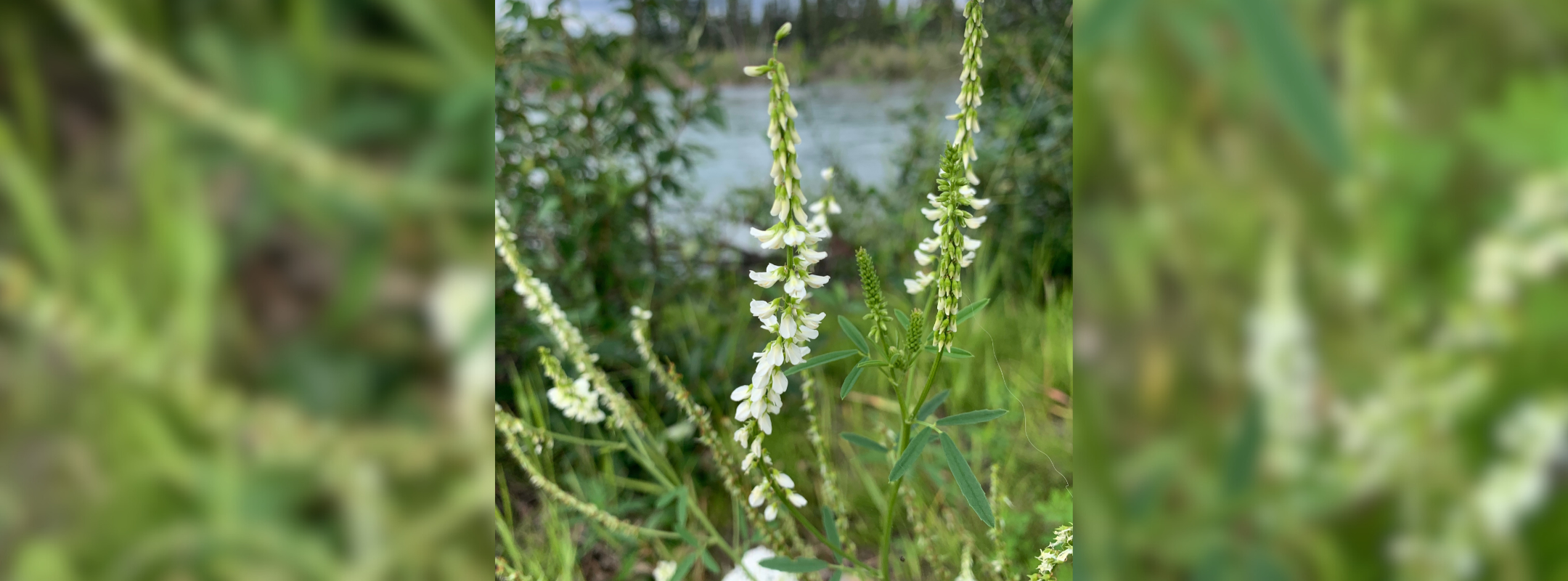
White sweetclover is invasive, and it is now well-established here in the Yukon. Photo by Paula Gomez Villalba.
Many invasive species first establish and spread easily near disturbed areas. White sweetclover loves gravelly soils, like those found along rivers, construction sites, and roadsides. At roadsides especially, sweetclover pushes out fireweed, producing a whopping 300,000 seeds and hitching rides on the soles of people’s shoes or the tires of their bikes and cars. These seeds can lie dormant in soil or water for up to 30 years before popping back up to sprout when conditions are right, which means restoration work requires returning to the same place and removing sweetclover again and again until the seedbank is depleted. It’s a slow process that’s made even more difficult due to the lack of resources dedicated to managing invasive species in the Yukon.
No one is really responsible for evaluating and combating invasive species in the Yukon. The territory’s Wildlife Act defines wildlife only as vertebrate animals, rather than all living organisms like plants. There is no noxious or invasive plant act. As we walked through the forest, Laurence highlighted the importance of writing to your local representatives. The territory needs comprehensive legislation to protect native species and species at risk. Stable, long-term funding is essential for increased awareness and on-the-ground restoration efforts that prevent the further introduction and spread of invasive species.
Ultimately, the future of the northern boreal depends on the actions we take today. White sweetclover is just one of many invasive species whose presence puts much of what makes the Yukon special at risk. Invasive species aren’t inherently better or more suited to the north, they just have a strong competitive edge because human-caused climate change continues to create favourable conditions for them, while simultaneously stressing native species.
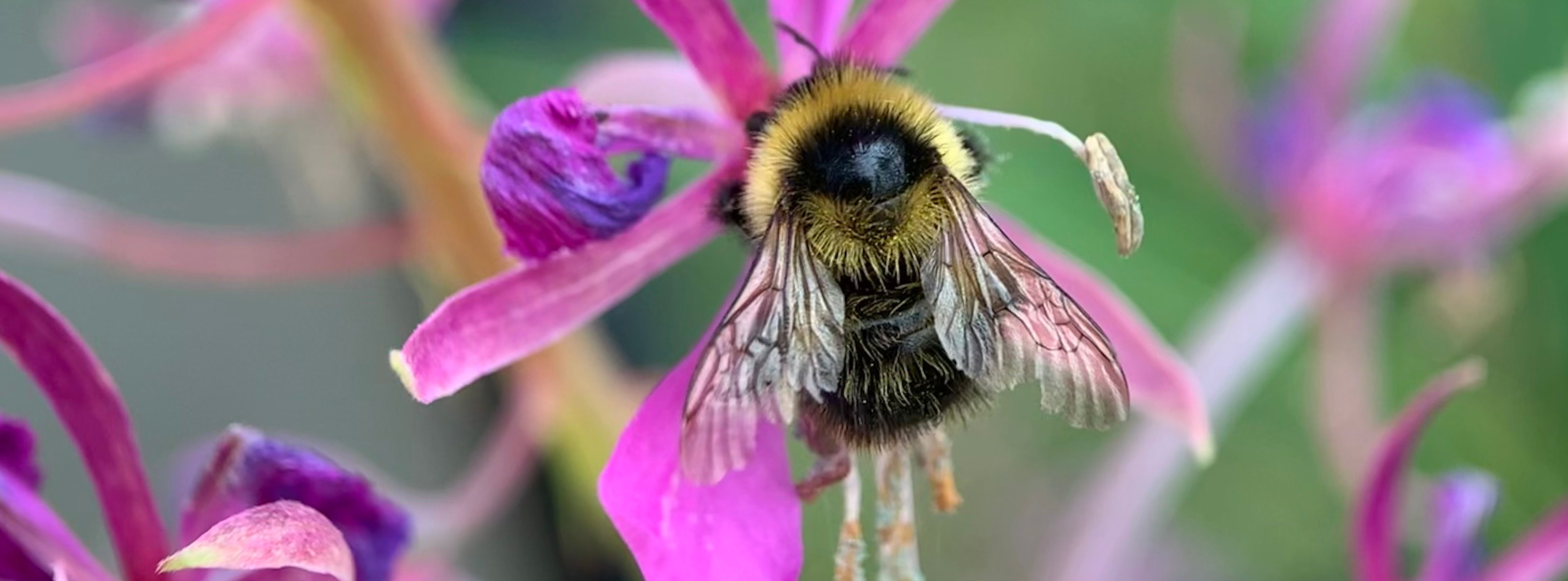
Bumblebees and many other animals rely on native Yukon plants to survive. Photo by Paula Gomez Villalba.
Beyond providing space for us to connect with nature, boreal forests and wetlands are biodiversity hotspots that filter water, provide homes for wildlife, and help build resiliency to climate change. Disrupting them triggers significant changes across ecosystems that have taken millenia to evolve. That’s why we need resources to engage and connect people with plants and restore areas that are changing. Find out about future Plants of the Boreal walks and similar events by signing up for our newsletter.
Southern Tutchone translations from the Yukon Native Language Centre’s Southern Tutchone Noun Dictionary and Champagne and Aishihik First Nation’s Dákwänjé Dictionary.

